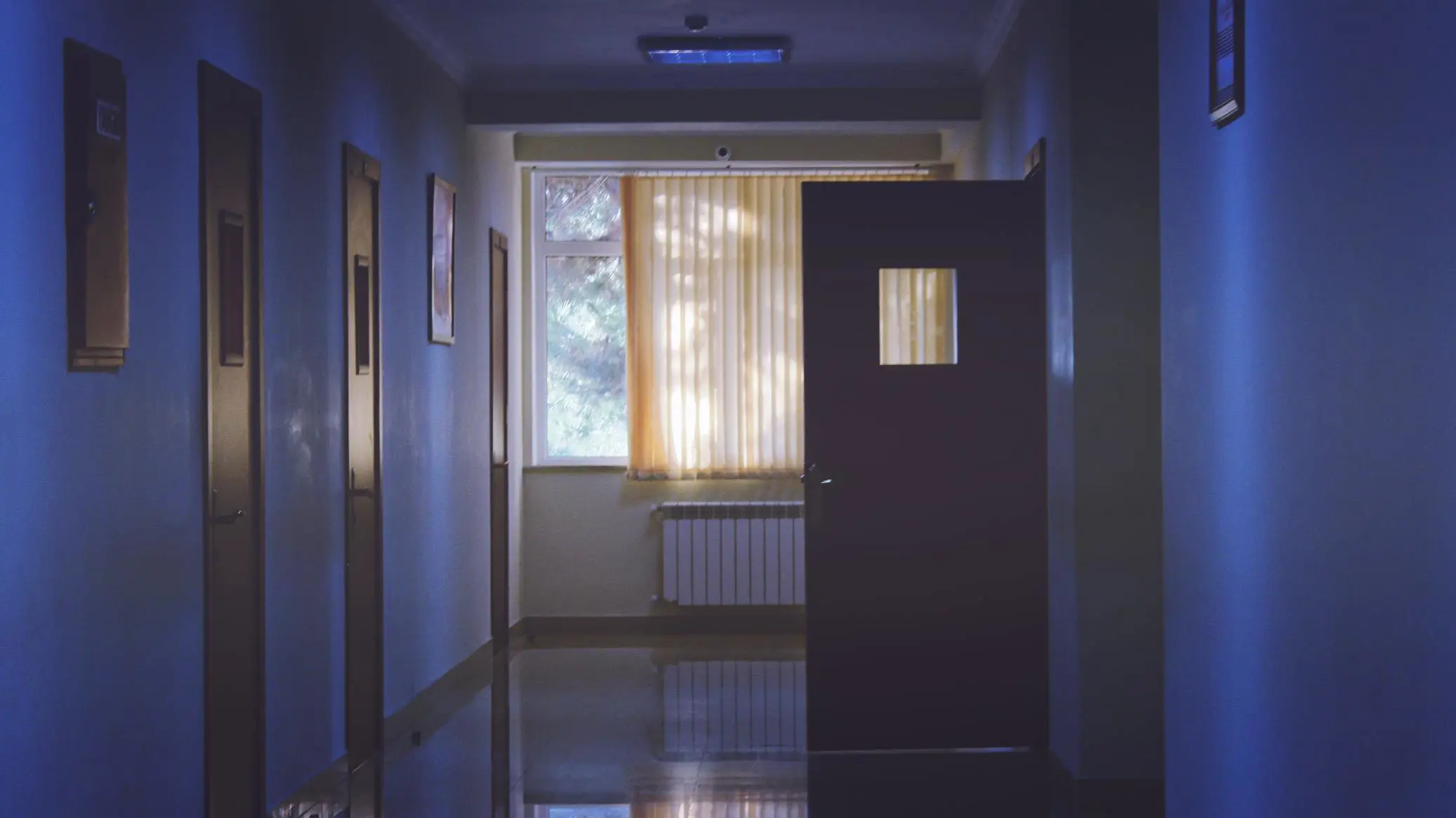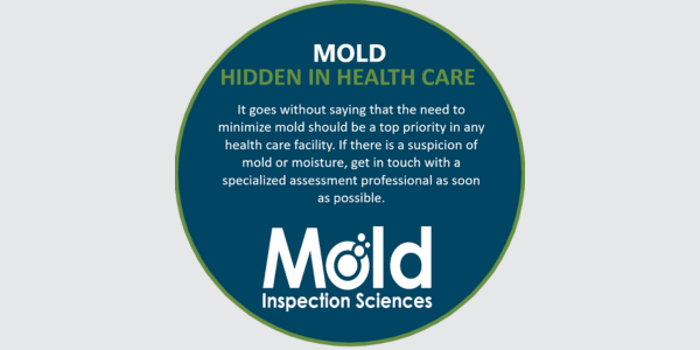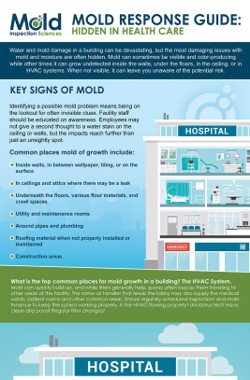Mold Response Guide
Here’s How to Identify Potential Mold and Moisture Problems in Medical Facilities

Water and mold damage in a building can be devastating, but the most damaging issues with mold and moisture are often hidden. Mold can sometimes be visible and odor-producing while other times it can grow undetected inside the walls, under the floors, in the ceiling, or in HVAC systems. When not visible, it can leave you unaware of the potential risk.
You may have heard the recent news of deaths linked to mold infections at Seattle Children’s Hospital. The report details that since 2001 , 14 children at the hospital developed infections from the mold known as Aspergillus. Six of the 14 died. Once thought to be isolated incidents, the hospital now believes the air handling systems caused the infections and deaths.
Seattle isn’t the only area to have hospital-related mold incidents. Another article reports that between 2014 and 2017, at least six deaths were linked to three different Pittsburgh area hospitals. These infections were also related to a commonly found outdoor fungal spore known as Mucor.

Download Now
Click here to download your free Mold Response Guide specifically for medical facilities

Share This Infographic On Your Site
Download a Printer Friendly Version

Need this in a version formatted to look best when printed out on, you know, actual paper? You've found the right one!

